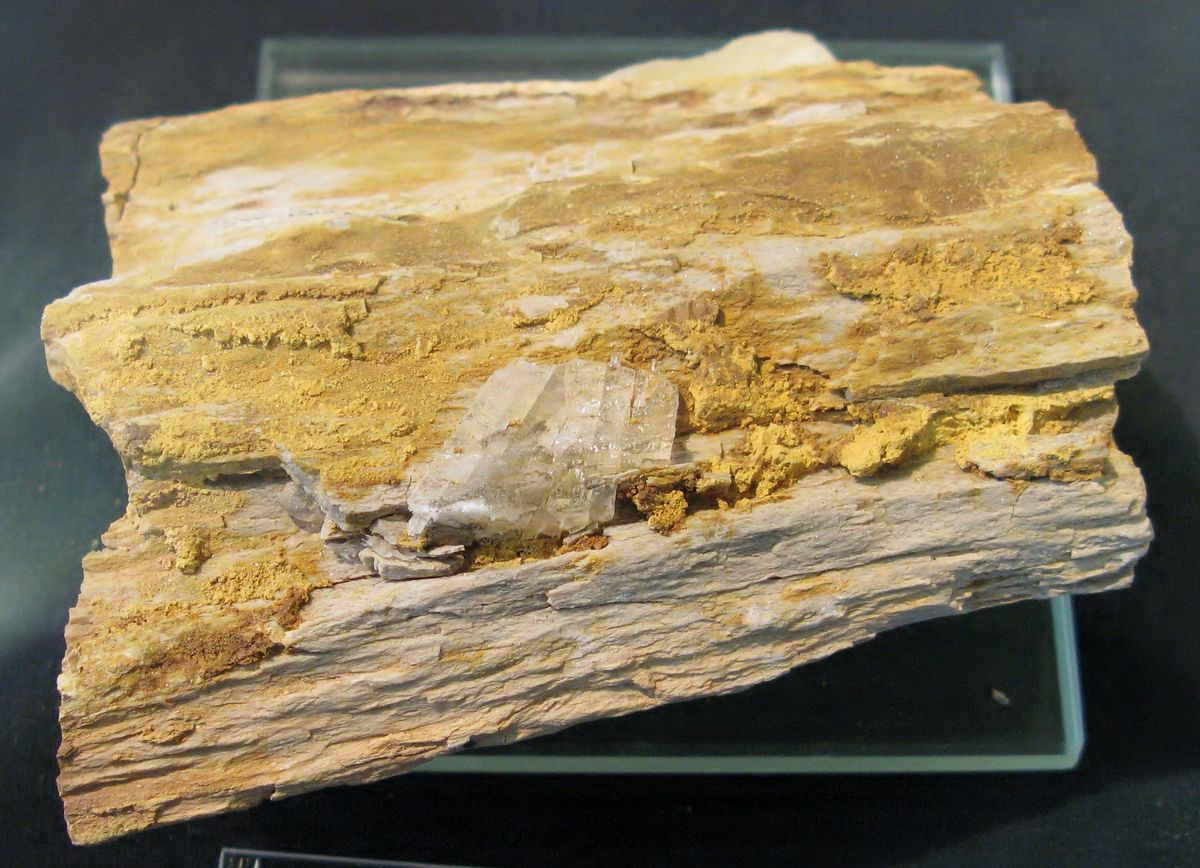
Carnotite is a fascinating mineral that holds a special place in the world of geology and chemistry. But what exactly is carnotite? Carnotite is a yellow-green mineral composed of uranium, vanadium, and potassium. It’s primarily known for being a significant source of uranium and vanadium, making it crucial for nuclear energy and steel production. Found mainly in the United States, especially in Colorado and Utah, this mineral has a rich history tied to the early 20th-century mining boom. Why should you care about carnotite? Understanding this mineral not only gives insight into natural resources but also highlights its importance in various industries. Ready to dive into 40 intriguing facts about carnotite? Let’s get started!
Key Takeaways:
- Carnotite is a bright yellow, radioactive mineral used for uranium and vanadium. It's found in arid regions and has historical significance in nuclear technology.
- Handling carnotite requires caution due to its radioactive nature. It has been used in nuclear weapons and can pose health risks if not handled properly.
What is Carnotite?
Carnotite is a fascinating mineral with a rich history and significant uses. This bright yellow mineral is primarily known for its uranium and vanadium content. Let's dive into some intriguing facts about carnotite.
-
Carnotite is a radioactive mineral composed of uranium, vanadium, potassium, and oxygen.
-
It was first discovered in 1899 by French scientist Marie-Adolphe Carnot, after whom it is named.
-
The mineral is typically found in sandstone formations in arid regions.
-
Carnotite is an important ore of uranium, which is used as fuel in nuclear reactors.
-
It also serves as a source of vanadium, a metal used to strengthen steel.
Where is Carnotite Found?
Carnotite deposits are scattered around the globe. These locations often have unique geological features that make them prime spots for this mineral.
-
Significant deposits of carnotite are found in the Colorado Plateau in the United States.
-
Other notable locations include Australia, Kazakhstan, and Namibia.
-
In the United States, carnotite was heavily mined during the early 20th century for its uranium content.
-
The mineral is often found in oxidized zones of uranium-vanadium deposits.
-
Carnotite can also be found in secondary deposits, where it forms from the weathering of primary uranium minerals.
Uses of Carnotite
Carnotite's unique properties make it valuable in various industries. Its primary uses revolve around its uranium and vanadium content.
-
Uranium extracted from carnotite is used in nuclear power plants to generate electricity.
-
Vanadium from carnotite is used to produce high-strength steel alloys.
-
During the Manhattan Project, carnotite was a crucial source of uranium for atomic bombs.
-
The mineral is also used in geological research to study the formation of uranium deposits.
-
Carnotite's bright yellow color makes it a collector's item for mineral enthusiasts.
Physical Properties of Carnotite
Understanding the physical properties of carnotite can help in identifying and utilizing this mineral effectively.
-
Carnotite has a monoclinic crystal system, meaning its crystals form in a specific geometric pattern.
-
The mineral has a hardness of 2 to 3 on the Mohs scale, making it relatively soft.
-
It exhibits a bright yellow to greenish-yellow color, which is quite distinctive.
-
Carnotite has a vitreous to silky luster, giving it a shiny appearance.
-
The mineral is soluble in acids, which can be used to extract its uranium and vanadium content.
Health and Safety Concerns
Due to its radioactive nature, handling carnotite requires caution. Here are some important health and safety facts.
-
Carnotite contains radioactive uranium, which can pose health risks if not handled properly.
-
Prolonged exposure to carnotite can lead to radiation poisoning.
-
It is essential to use protective gear when handling carnotite to avoid inhaling dust particles.
-
Proper storage of carnotite involves keeping it in lead-lined containers to shield from radiation.
-
Disposal of carnotite waste must follow strict regulations to prevent environmental contamination.
Historical Significance of Carnotite
Carnotite has played a significant role in history, particularly in the development of nuclear technology.
-
During World War II, carnotite was mined extensively for its uranium to develop nuclear weapons.
-
The Uranium Rush in the United States during the 1950s saw a surge in carnotite mining.
-
Carnotite was one of the first minerals to be used in the commercial production of uranium.
-
The mineral's discovery helped advance the field of radiochemistry.
-
Carnotite mining has significantly impacted the economies of regions where it is found.
Environmental Impact of Carnotite Mining
Mining carnotite can have significant environmental consequences. Here are some key points to consider.
-
Carnotite mining can lead to soil and water contamination due to radioactive waste.
-
The process often involves open-pit mining, which can disrupt local ecosystems.
-
Proper rehabilitation of mining sites is crucial to minimize environmental damage.
-
Regulations require mining companies to implement safety measures to protect workers and the environment.
-
Advances in mining technology aim to reduce the environmental footprint of carnotite extraction.
Fun Facts About Carnotite
Carnotite isn't just about serious science and industry. There are some fun and quirky facts about this mineral too.
-
The bright yellow color of carnotite makes it a popular specimen in mineral collections.
-
Some carnotite samples can glow under UV light due to their radioactive properties.
-
Carnotite has been featured in educational exhibits about radioactive minerals.
-
The mineral's name is sometimes used in popular culture to signify something rare and valuable.
-
Collectors often seek out carnotite for its unique appearance and historical significance.
The Final Nugget
Carnotite, a bright yellow mineral, holds a treasure trove of fascinating facts. From its role in uranium and vanadium production to its unique properties, this mineral has left a significant mark on both geology and industry. Found primarily in the United States, it has been a key player in nuclear energy and various scientific studies.
Understanding carnotite's formation, uses, and historical significance gives us a deeper appreciation for this remarkable mineral. Whether you're a geology enthusiast or just curious about the natural world, carnotite offers a glimpse into the complexities of Earth's resources.
Keep exploring and learning about the wonders of our planet. There's always something new to discover, and who knows? Maybe the next fascinating fact is just around the corner. Thanks for joining us on this journey through the world of carnotite!
Frequently Asked Questions
Was this page helpful?
Our commitment to delivering trustworthy and engaging content is at the heart of what we do. Each fact on our site is contributed by real users like you, bringing a wealth of diverse insights and information. To ensure the highest standards of accuracy and reliability, our dedicated editors meticulously review each submission. This process guarantees that the facts we share are not only fascinating but also credible. Trust in our commitment to quality and authenticity as you explore and learn with us.


